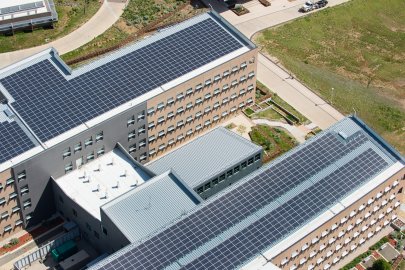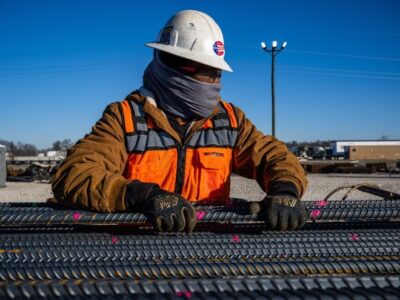The United States Department of Energy’s (DOE) Federal Energy Management Program will provide $250 million in grants for new energy and water efficiency projects at federal agencies. The program announced the new funding via its Assisting Federal Facilities with Energy Conservation Technologies program.
The funding will be used on projects at locations such as the Pentagon, the Mauna Loa Observatory in Hawaii, and the Energy Department headquarters in Washington. The money is designed to promote energy-efficient projects on a national level and ensure that the federal government is a clean energy leader and example to citizens and businesses.
“[The current administration] has charged the federal government to lead by example by transforming its footprint of over 300,000 buildings to be more energy efficient and climate resilient, which means cleaner air across the country,” Brenda Mallory, White House Council on Environmental Quality chair, told reporters at the Pentagon. “This investment, part of the president’s Investing in America agenda, will help achieve the administration’s ambitious federal sustainability goals while creating thousands of good-paying jobs, saving taxpayers money and building healthier communities.”

Photo Courtesy whitehouse.gov
The Pentagon is one of 31 government sites receiving $104 million in Energy Department grants — funding that is expected to create more than $361 million in private investment.
The Defense Department will install solar panels and a heat pump system in the Pentagon to reduce the use of natural gas and outdated fuel oil combustion systems, as well as promote clean energy.
Also, in Washington, D.C., funding will be used to install thermally-efficient windows at DOE headquarters.
The grant program also includes assistance for energy upgrades at naval bases in Georgia and Washington and the Naval Support Activity Mid-South in Tennessee. Other notable projects include:
- Retrofitting the energy systems at the Social Security Administration Headquarters in Baltimore, Maryland
- New energy conservation measures at the Department of Transportation Headquarters in D.C.
- Addressing the aging chilled water system at the DOE Savannah River Site in Aiken, South Carolina
- Incorporating net-zero building requirements at the Grand Junction Field Support Center in Colorado
- Adding new solar panels and batters at the Mauna Loa Observatory in Hawaii, making the facility net-zero for carbon emissions

Photo Courtesy U.S. Department of Energy
“As the observatory is considered the definitive source for documenting the increased atmospheric burden of fossil fuel emissions, this project has the unique ability to eliminate 100% of the combustion of fossil-fueled electrical power to make those critical measurements,’’ DOE said in a statement.
Each project is expected to double the amount of carbon-free electricity at federal facilities, leverage private investment, and serve to demonstrate easily replicable and scalable clean projects for the entirety of the government. In the first year, the sum of the projects is expected to save close to $30 million in energy costs, cut greenhouse gas emissions at a rate equal to taking 23,042 gas-powered vehicles off the road, and reduce overall energy usage by the equivalent of nearly 30,000 homes’ annual electric costs.

Photo Courtesy DOE Federal Energy Management Program (FEMP)
The new projects align with the federal government’s renewed commitment to clean energy and sustainability goals. By leading by example, the government hopes to encourage residents and businesses to meet their own clean energy goals, helping the U.S. move closer to its goal of net-zero carbon emissions by 2050.





